Perplexity’s Parisian Dream
Why Perplexity’s nod to the past fails to paint a picture of the future
Look, I love Perplexity. I use it every single day. For those unfamiliar, Perplexity is an “AI-powered answer engine” that aims to provide more direct answers than traditional search engines, leveraging large language models. But their recent ad, “Parisian Dream,” a clear swipe at Google’s iconic “Parisian Love” from 2009, left me feeling... perplexed.
Let’s break it down: Perplexity’s ad uses many of the same prompts as Google’s original, swapping in their UI and adding some b-roll footage. It’s undeniably clever as a jab at Google. But shouldn’t they be aiming higher? If you can’t out-do a legendary ad, why try? Why not make something uniquely, undeniably Perplexity?
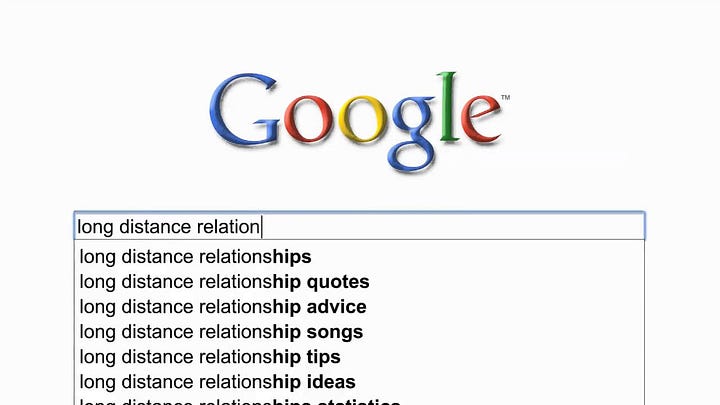
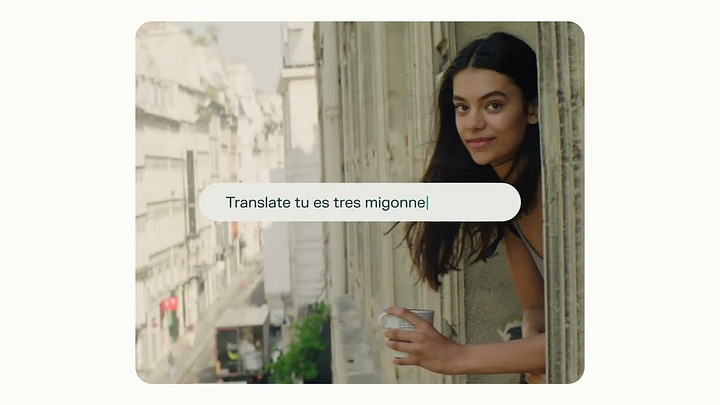
The original vs. the remix
Google’s “Parisian Love” set a new standard for tech advertising. It told a love story entirely through search queries, demonstrating how technology intertwines with human experiences. The ad was praised for its simplicity, emotional appeal, and as an effective product demo. (It also put their Creative Lab on the map.)
Perplexity’s “Parisian Dream” follows a similar structure but swaps in its own UI and adds b-roll. While it showcases Perplexity’s capabilities, it misses the punch.
Where “Parisian Dream” falls short
Pacing: Google’s ad built a story with rising action. We followed a journey from curiosity to love to building a life. Perplexity misses the plot, skipping the query for long-distance relationship advice, and rushing us through the beats.
Visual clutter: Google’s ad left room for imagination. Audio accentuates key moments, but otherwise you’re free to imagine the narrative as it plays out. Perplexity’s is stuffed with unnecessary visuals. (Did we need the pillow-talk? The ultrasound?) Let the UI speak for itself!
Copycat syndrome: By following Google so closely, Perplexity misses a chance to show its own personality. There are so many interesting things Perplexity does that sets it apart, from citations to encouraging curiosity with the follow-up questions after a query. What new stories could that have told?

A glimmer of hope
Credit where it’s due: Perplexity is investing in brand. Their logo pops in a sea of soft, sparkly, rainbow-gradient sameness. (Kudos, Mike Smith.)
It’s been fun watching Phi Hoang, Henry Modisett, and Ryan Putnam build in public, sharing print explorations and more. Their retro-futurist riffs feel fresh—the start of something ownable. I’m into the wordplay, too: “Know it all” and “Where knowledge begins” are great lines. (I’m deeply susceptible to the utopian optimism of it all.)

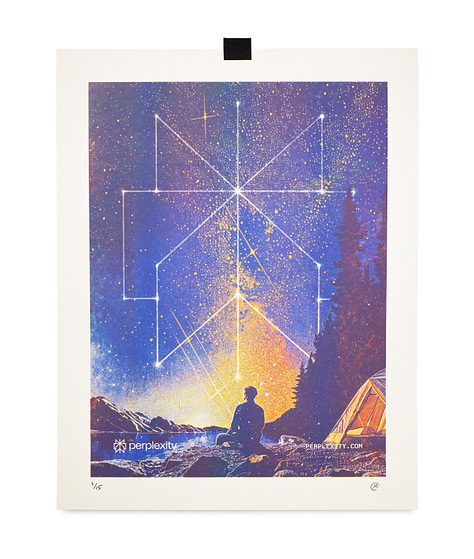
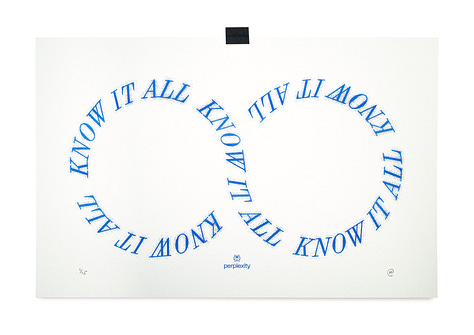
But this ad doesn’t live up to that potential. As @jstn notes it on X: “marketing slogans can be platitudes but they shouldn’t be false, imho. knowledge doesn’t begin with an LLM. you can’t know it all. building tomorrow involves more than peering into the past.” Emmett Shear adds: “Beautiful, but Oglivy wouldn’t approve. I have no idea why the product is better or why I should use it, or even what it does.”
Maybe that’s the core issue. AI tools are trying to find their voice while figuring out what (who?) they’re for. (Evidenced by this quote from Perplexity’s Chief Business Officer to Adweek: “When you ask a question in natural language, you get an answer back in natural language, which takes another step in the user journey and doesn’t just point them in the direction with links—it’s a big paradigm shift.” What?? )
So instead of breaking new ground, Perplexity plays it safe by imitating Google. Instead of being genre-defining, it settles for Google-adjacent.
The vision vs. the execution
Perplexity Co-founder and CEO Aravind Srinivas has a compelling vision: “We want to make learning fun and interesting. Everybody talks about making mobile apps engaging, but that doesn’t need to be done through dancing videos. It can be done through making people curious.”
The ad hints at this with the child speaking into the phone at the end. (OK, maybe a little bleak.) What if they started there? Show the crib onward—a kid growing up with Perplexity, a nod to Google’s ad but focused on the future. That’s “where knowledge begins.” Google can have 2009; Perplexity is taking 2024 and whatever comes next.
The bigger picture
This misstep highlights a broader challenge in AI advertising. How do you showcase technical capabilities while creating emotional connections? How do you differentiate yourself in a crowded market? The tech world is littered with companies that tried to out-Google Google. The real opportunity lies in charting a new course entirely.
Dmitry Shevelenko, Perplexity’s Chief Business Officer, acknowledges this: [Perplexity’s ad] “needs to stand on its own legs,” while intending to generate buzz and build awareness. (He also shares that in-house Creative Producer Jeremiah Warren made the ad in two weeks. Not bad for buzz.)
Looking forward
As AI companies fight for our attention, they should remember: the most powerful tech isn’t just about what it can do—it’s about how it makes us feel. Future AI ads need to strike a balance between showing off capabilities with telling compelling stories that resonate on a human level.
Designer Erica Gorochow nailed it back in May: “Emerging branding & messaging around AI companies is incredibly rich, thought provoking territory. There is a complex story to tell. Hearts & minds to be won. Trust to be built. And a need to connect back to humanity.”
Perplexity’s ad got us to look twice, which counts for something in today’s cluttered media landscape. But to truly stand out, AI companies need to dream bigger, aiming not just to match their competitors, but to redefine the genre entirely.
—Carly




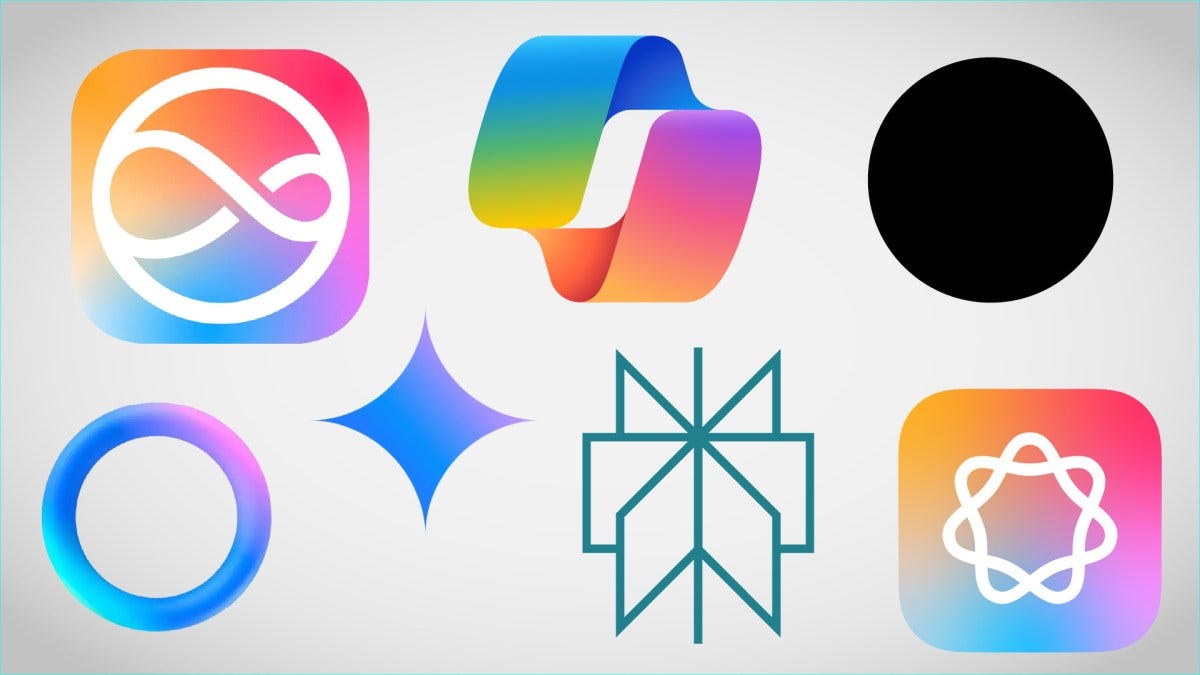
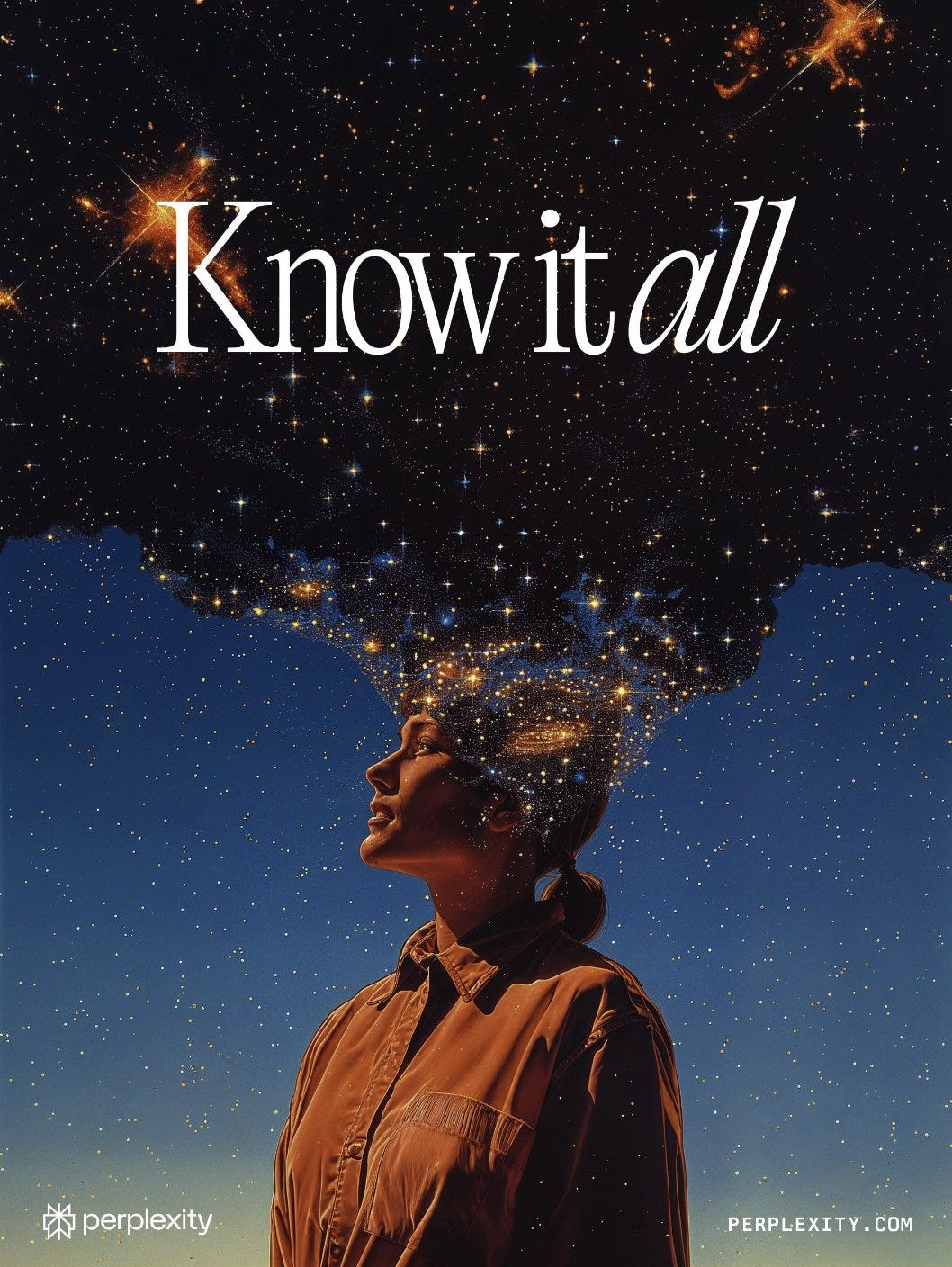

Really appreciate the thoughtful context and commentary!
Thanks for unpacking, legit arguments. Curious to keep watching them (esp Perplexity as I too happen to like and use their product) finding their real voices.